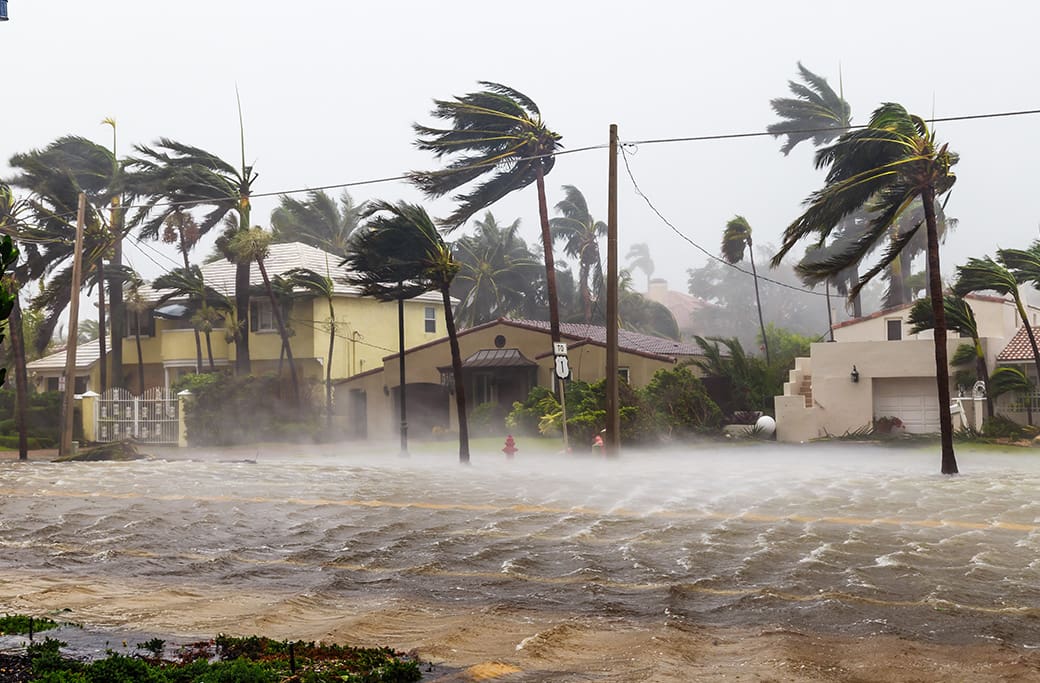
Hurricanes can be devastating, bringing not just high winds but also torrential rains that lead to flooding. For homeowners, especially those living in coastal areas, preparing for a hurricane is crucial. Even inland homeowners should take precautions, as hurricanes can cause damage far inland. Flooding can cause extensive damage to your property and possessions, making it essential to take preventative measures. Take steps to secure your home against flooding before a hurricane strikes, ensuring you and your family stay safe.
Preparing Your Home
Importance of Pre-Hurricane Home Inspection
Before a hurricane hits, it’s vital to conduct a thorough inspection of your home to identify vulnerable areas that could be prone to water damage. A pre-hurricane home inspection should focus on the following key areas:
-
- Roof: Check for any missing or damaged shingles. Make sure gutters and downspouts are clear of debris to allow proper water drainage.
- Windows and Doors: Inspect for any gaps or cracks. Use weather stripping or caulking to seal these weak spots.
- Foundation: Look for cracks or signs of water seepage. Address any issues with waterproofing solutions.
- Basement: Ensure that the basement is free of leaks and that the sump pump is in working order.
Securing Your Home
Installing Flood Barriers
Flood barriers are an effective way to prevent water from entering your home. Here are a few options:
-
- Temporary Flood Barriers: Products like temporary flood barriers or quick-deploy dams can be set up quickly when a hurricane is imminent.
- Permanent Flood Barriers: Consider installing flood panels or flood doors if you live in an area prone to frequent flooding.
Using Sandbags
Sandbags are a tried-and-true method for flood prevention. Here’s how to use them effectively:
-
- Placement: Place sandbags around doors, windows, and any other openings where water might enter.
- Stacking: Stack sandbags in a staggered pattern to ensure they form a tight barrier.
- Sealing: Use plastic sheeting behind the sandbags to improve their water resistance.
Installing Sump Pumps
A sump pump can be a lifesaver during heavy rains. Here’s what you need to know:
-
- Types: There are two main types of sump pumps—submersible and pedestal. Choose one based on your specific needs.
- Installation: Ensure the sump pump is properly installed in your basement or crawl space to effectively remove excess water.
- Maintenance: Regularly check and maintain your sump pump to ensure it’s in good working order.
Essential Supplies to Prevent Water Damage
Being well-prepared with the right supplies can drastically reduce water damage during and after a hurricane. Here is a checklist of must-have items:
- Tarps: Large tarps can be used to cover damaged roofs or windows, providing a temporary shield against rain.
- Plastic Sheeting: Essential for sealing off doors, windows, and other openings. It’s also useful for covering furniture and other valuable items inside your home.
- Wet/Dry Vacuums: A wet/dry vacuum is indispensable for quickly removing water from flooded areas, helping to prevent further damage.
- Buckets and Mops: Simple but effective tools for cleaning up smaller water spills and leaks.
- Dehumidifiers: These help reduce moisture levels in your home, preventing mold and mildew growth.
- Waterproof Containers: Store important documents, valuables, and emergency supplies in waterproof containers to keep them safe from water damage.
- First Aid Kit: In addition to water-related supplies, make sure you have a well-stocked first aid kit on hand for any emergencies.
- Portable Battery-Powered Pump: Useful for removing standing water from basements or other flooded areas if the power goes out.
- Duct Tape and Sealants: These can be used for quick repairs to leaks and breaches in your home’s structure.
- Flashlights and Batteries: Power outages are common during hurricanes, so ensure you have ample lighting options.
- Rubber Gloves and Boots: Protect yourself while cleaning up debris and water after the storm.
By having these supplies ready, you’ll be better equipped to handle the challenges posed by a hurricane and minimize the potential for water damage to your property.
Post-Hurricane Actions
Post-Hurricane Home Inspection
After the hurricane has passed, it’s essential to inspect your home for any water damage:
-
- Check for Structural Damage: Look for cracks in the walls, foundation, and roof.
- Inspect for Moisture: Use a moisture meter to detect hidden water damage in walls and floors.
- Examine Electrical Systems: Ensure that all electrical systems are dry and functioning correctly. If in doubt, contact a professional.
Recovery Steps
If your home has sustained water damage, take the following steps to recover:
-
- Remove Water: Use pumps and wet/dry vacuums to remove standing water.
- Dry Out Your Home: Use dehumidifiers and fans to dry out affected areas.
- Clean and Disinfect: Thoroughly clean and disinfect to prevent mold growth.
- Contact Professionals: For severe damage, consider hiring restoration experts to assess and repair the damage.
Securing Your Home Against Hurricane Flooding
Securing your home against flooding before a hurricane requires preparation and vigilance. By conducting a pre-hurricane home inspection, installing flood barriers, using sandbags, and ensuring your sump pump is in good condition, you can significantly reduce the risk of water damage. After the storm, a thorough inspection and prompt action can help you recover quickly.
Don’t wait until it’s too late. Take action now to protect your home and loved ones from the devastating effects of flooding.
Ready to safeguard your home? Contact STOP Restoration for expert advice and services tailored to your needs.




